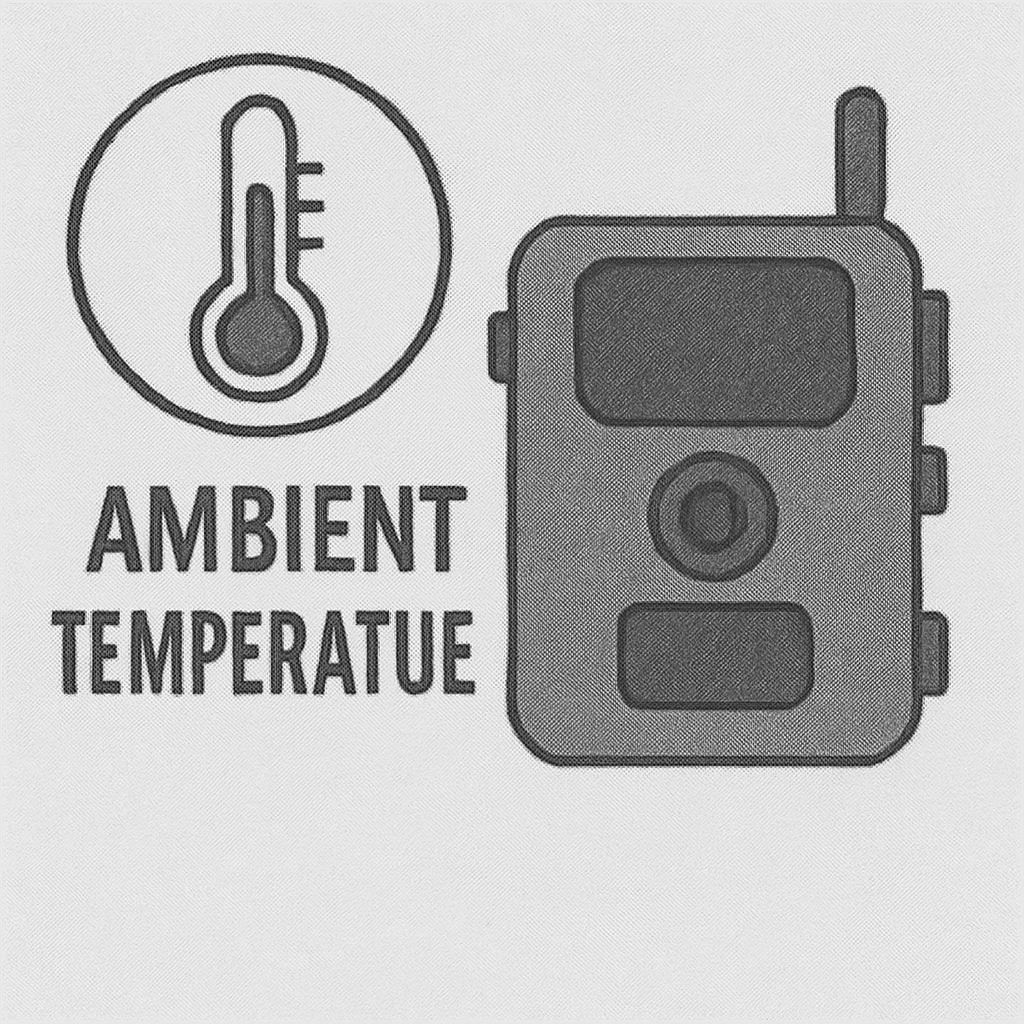Working Temperature of Trail Cameras
Learn about the working temperature of trail cameras, its importance, and how it affects performance in extreme environments.
Glossary
An internal device in trail cameras that records ambient temperature, providing essential environmental context for wildlife monitoring.
A temperature sensor in a trail camera is an electronic component designed to measure and monitor the ambient temperature. This data is often embedded as metadata into photos or videos captured by the camera, providing valuable environmental context. These sensors are particularly useful for wildlife monitoring, hunting, and ecological research, as they allow users to correlate animal activity with temperature conditions.
Trail cameras, built for outdoor use, are equipped with temperature sensors to withstand various environmental conditions. These devices can measure temperatures across a wide range, typically from sub-zero to extreme heat, ensuring functionality in diverse terrains and climates. Some advanced models also record temperature fluctuations during continuous operation, offering insights into both environmental and internal camera conditions.
Temperature sensors rely on changes in thermal energy to function. Below is a detailed breakdown of their operation:
Heat Detection:
Data Conversion:
Metadata Integration:
Continuous Monitoring:
| Specification | Typical Values |
|---|---|
| Operating Range | -20°C to 60°C |
| Accuracy | ±2°C |
| Placement | Near processor or battery compartment |
| Metadata Format | EXIF |
Seasonal Wildlife Tracking:
Behavioral Studies:
Camera Optimization:
Device Protection:
Strategic Placement:
High-Capacity Storage and Power:
Regular Testing:
Data Integration:
Temperature sensors are integral to the functionality of modern trail cameras. They provide valuable environmental data that enhances the understanding of animal behavior, optimizes camera performance, and aids in ecological research. Whether you’re a wildlife enthusiast, hunter, or researcher, choosing a camera with a reliable temperature sensor can significantly enhance your data collection and analysis capabilities.
Have you used trail cameras with temperature sensors? Share your experiences and insights in the comments!
Explore our collection of trail cameras equipped with temperature sensors and other features for wildlife research and hunting.
A temperature sensor in a trail camera measures and records the ambient temperature, often embedding this data into image or video metadata.
Temperature sensors detect ambient heat as infrared radiation, convert it into an electrical signal, and log the resulting temperature data in the camera's metadata.
Temperature sensors provide environmental context for wildlife monitoring, help reduce false triggers, and assist in tracking animal activity related to temperature changes.
Most temperature sensors in trail cameras have an accuracy of ±2°C, though this can vary based on the camera model and sensor placement.
Scientists use temperature data from trail cameras to analyze animal behavior in relation to environmental conditions, such as seasonal activity patterns or habitat preferences.
Learn about the working temperature of trail cameras, its importance, and how it affects performance in extreme environments.

Understand the effects of ambient temperature on trail cameras, including battery performance, image quality, and PIR sensor functionality.
Learn about image sensors in trail cameras, including how they work, their technologies (CMOS and CCD), and their role in capturing high-quality photos and videos.